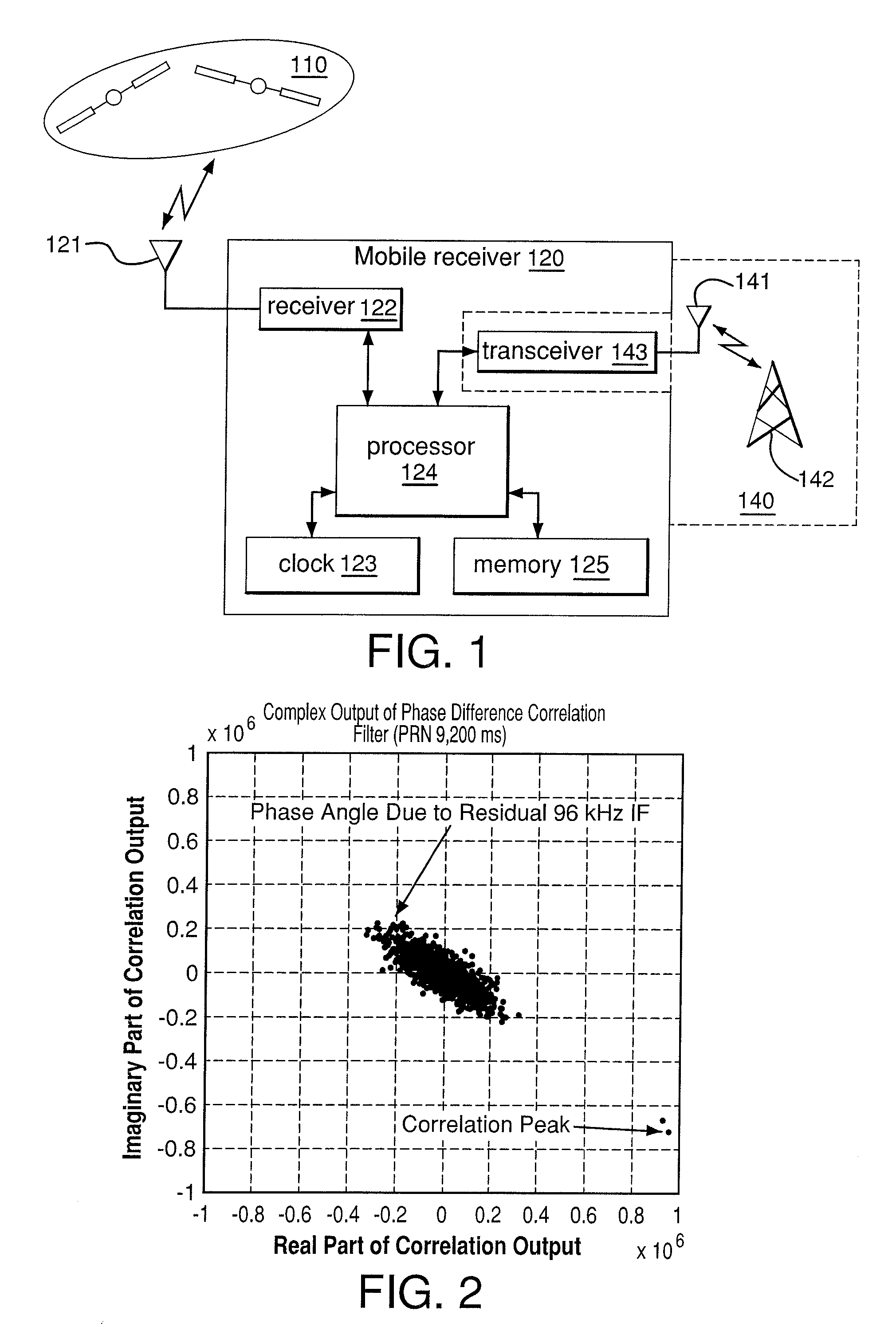Navigation signal differential acquisition method and systems therefor
a technology of navigation signal and acquisition method, applied in the field of communication methods used in satellite navigation system, can solve the problems of signal detection and synchronization, high amount of computation required, and time-domain and frequency-domain convolution suffer from computational scaling issues
- Summary
- Abstract
- Description
- Claims
- Application Information
AI Technical Summary
Benefits of technology
Problems solved by technology
Method used
Image
Examples
Embodiment Construction
[0023]A preferred embodiment of the present invention will be set forth in detail with reference to the drawings, in which like reference numerals refer to like elements or operational steps throughout.
[0024]The communication methods used in satellite navigation systems and a receiver for processing those signals, according to at least one embodiment, are illustrated in FIG. 1. A mobile receiver 120 communicates with multiple satellites 110 through an antenna or antennas 121. The received signals are processed through the receiver module 122 and forwarded to the processor 124. The processor 124 has access to memory 125 and has a reference clock 123 that is used in the processing of the signals. Additionally, the processor 124 of the mobile receiver 120 may also have access to a transceiver 143, that is used to send and receive other signals, through an antenna 141 to other sources 142, in the terrestrial arena 140. The other sources can, in some embodiments, be used to determine and...
PUM
 Login to View More
Login to View More Abstract
Description
Claims
Application Information
 Login to View More
Login to View More - R&D
- Intellectual Property
- Life Sciences
- Materials
- Tech Scout
- Unparalleled Data Quality
- Higher Quality Content
- 60% Fewer Hallucinations
Browse by: Latest US Patents, China's latest patents, Technical Efficacy Thesaurus, Application Domain, Technology Topic, Popular Technical Reports.
© 2025 PatSnap. All rights reserved.Legal|Privacy policy|Modern Slavery Act Transparency Statement|Sitemap|About US| Contact US: help@patsnap.com



